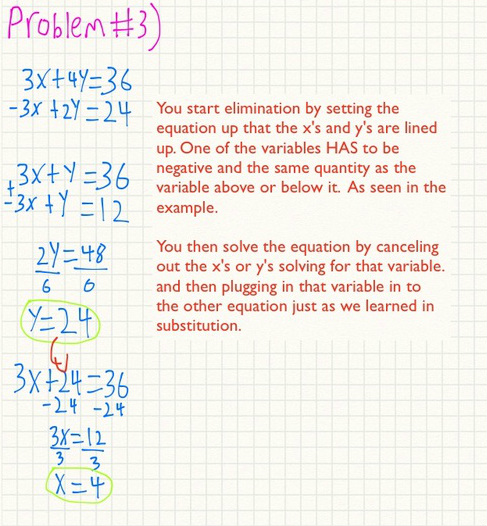
Hence, it was published only later, in Cardano’s Ars Magna.Classify the equations as a conditional equation, an identity, or a contradiction and then state the solution. However, as we shall see, the solution of quartic equations requires that of cubic equations. The quartic equation was solved in 1540 by the mathematician Ludovico Ferrari. For this reason, Bombelli is regarded by many as the discoverer of complex numbers.

The Italian mathematician Rafael Bombelli later studied this issue in detail.
#SOLVING COMPLEX 4 EQUATION SYSTEMS FULL#
However, Cardano noticed that Tartaglia’s solution sometimes involved what we now call complex numbers, so he did not really recognize the full implications of the result. However, when Cardano learned that del Ferro had independently found the solution before Tartaglia, he decided to include it in his Ars Magna (though Cardano credited both Tartaglia and del Ferro for the original discovery, Tartaglia wasn’t pleased about his secret being revealed!). to find another system of generators (for instance, a reduced Groebner basis) for the ideal I generated by the polynomial equations. Later he was convinced by Cardano to disclose his secret (the solution), on the condition that Cardano vowed never to publish it. The Italian mathematician and engineer Niccolò Tartaglia also discovered the solution (independently). The oldest cubic equation to be studied was the algebraic version of the famous geometric problem of doubling the cube, the so-called Delian problem (which in algebraic terms is equivalent to solving the equation x³=2).įigure 3: From left to right, Scipione del Ferro, Niccolò Tartaglia and Gerolamo Cardano. History: A Bird’s-Eye View Cubic EquationsĬubic equations have been studied for centuries, since the ancient Babylonians, Greeks, Chinese, Indians, and Egyptians (for more details see the Wiki article). If the factorization of a general A is A LDU, then three steps are necessary, the intermediate one being the trivial solution of a linear system with a. I will start by providing a quick overview of the history of the subject. If an equation is a symbolic expression (without the right side), the solver assumes that the right side of the equation is 0. These equations or expressions can also be separated by commas. Exact solutions (or roots of the polynomial) can be found using methods of algebra or trigonometry (this article, however, will be restricted to algebraic methods only). System of equations or expressions to be solve, specified as a symbolic vector, matrix, or array of equations or expressions.
#SOLVING COMPLEX 4 EQUATION SYSTEMS HOW TO#
In this article, I will show how to derive the solutions to these two types of polynomial equations. However, the problems of solving cubic and quartic equations are not taught in school even though they require only basic mathematical techniques. Taking the square root of each side and using i for the 1 under the radical gives you the two imaginary roots. Obtain the two real roots by setting x 2 and x + 2 equal to 0. Quadratic equations are second-order polynomial equations involving only one variable. Substitution is a simple method in which we solve one of the equations for one variable and then substitute that variable into the other equation and solve it. Factor the left side: ( x2 + 16) ( x2 4) ( x2 + 16) ( x 2) ( x + 2) 0. We all learn how to solve quadratic equations in high-school. solving two linear equations in two variables, we use matrices and matrix operations to develop procedures that are suitable for solving linear systems of.


 0 kommentar(er)
0 kommentar(er)
